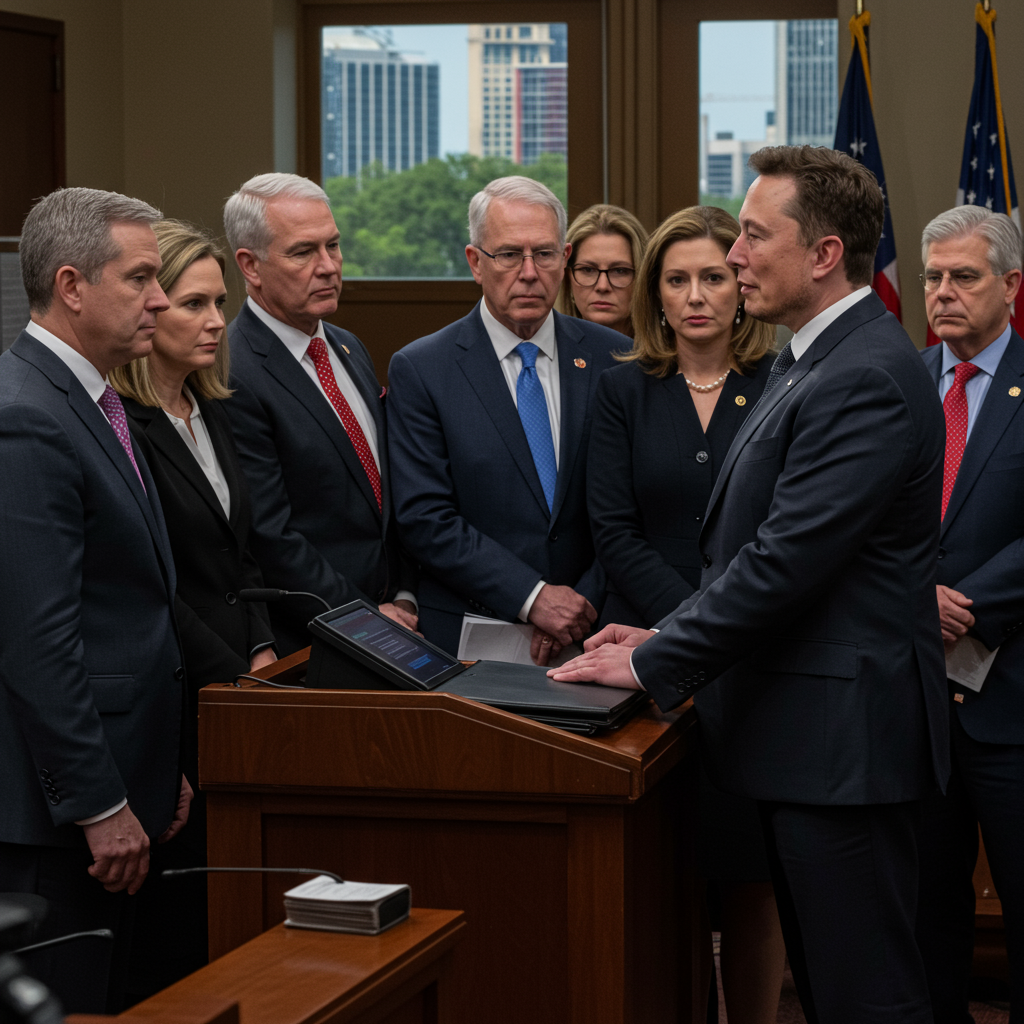Tesla is reportedly set to begin its long-anticipated “Robotaxi” service roll-out in Austin, Texas, this weekend. However, details emerging about the planned launch reveal significant limitations, centering on the requirement for a human “safety monitor” in the front passenger seat of the vehicle during rides.
This detail has led some observers to suggest the service is more of a limited pilot designed to boost the perception of Tesla’s self-driving capabilities, particularly as competitors like Waymo have already launched unsupervised autonomous ride-hailing services in cities including Austin.
Human Oversight Confirmed for Tesla Robotaxis
According to information shared with invited participants, every Tesla Robotaxi ride will feature a Tesla employee acting as a safety monitor. This individual will occupy the front passenger seat, equipped with controls to intervene if necessary, such as stopping the vehicle or having it pull over. This setup aligns with previous reports of Tesla test vehicles in Austin being observed with employees in supervisory roles.
The presence of a safety monitor means Tesla’s initial Robotaxi offering in Austin is fundamentally different from the company’s long-promised vision of unsupervised self-driving for its consumer vehicles under the “Full Self-Driving” (FSD) program. Early access participants, reportedly selected from pro-Tesla influencers primarily on the X social media platform, are part of a cautious, invite-only testing phase using a new, dedicated Robotaxi app.
Beyond the human monitor, teleoperators are also expected to provide remote assistance when needed, using feeds from the cabin camera. While surveillance is prohibited, Tesla notes the FSD version running on these vehicles includes new features like sound detection for emergency vehicles. Passenger privacy is addressed, with cabin cameras and microphones off by default, only activating if riders opt-in, request support, or during emergencies.
Limitations of the Austin Robotaxi Service
Invitations confirm several restrictions governing the early access program:
Geofenced Area: Service is confined to a specific, limited zone within Austin. Airports are explicitly excluded.
Operating Hours: Rides are available only between 6:00 AM and 12:00 AM.
Weather Dependent: Service may be limited or unavailable during inclement weather.
Invite-Only: Only the specific invited user can download and use the dedicated Robotaxi app.
Strict Rules: Participants must agree to terms, rules, and policies covering behavior, prohibited activities (smoking, alcohol, drugs, crime, weapons, illegal/hazardous materials), and the banning of surveillance or reverse engineering of vehicle components.
Content Sharing: Tesla reserves the right to suspend or terminate access if users share social media content depicting misuse or rule violations.
- Payment/Feedback: Participants must have a credit/debit card on file and are encouraged to provide star ratings and feedback. Rides will be priced, potentially including tolls and fees, and users may be charged for damages.
- electrek.co
- electrek.co
- www.evworld.com
- www.notateslaapp.com
- www.evworld.com
Behind Competitors? Comparing Approaches
The requirement for a safety monitor immediately distinguishes Tesla’s launch from services like Waymo, which has been operating fully driverless commercial ride-hailing in Austin and other cities after phased testing that included periods without human supervision in the vehicle. Waymo’s expansion of its service area in California also highlights the ongoing progress of competing autonomous fleets.
Critics argue that the primary appeal of services like Waymo for customers is the complete absence of a human driver. Tesla’s model, launching with mandatory human supervision, suggests the company’s self-driving technology is not yet ready for unsupervised commercial deployment in complex urban environments.
Tesla’s FSD Development Continues
Despite the supervised nature of this Robotaxi launch, Tesla continues to work on improving its core Full Self-Driving software. The company has outlined plans for significantly more advanced FSD versions in development, including one described as having a roughly 4.5 times increase in parameters and improved memory usage for better context length, expected potentially in late 2025. This technical roadmap indicates Tesla is aiming for a more capable system in the future.
However, past challenges, such as the acknowledgment that earlier Autonomy Hardware (HW3) computers were not sufficient for unsupervised self-driving, highlight the complexity and ongoing nature of this development.
Conclusion: Optics vs. Autonomy?
Ultimately, Tesla’s initial Robotaxi launch in Austin appears to be a heavily supervised pilot program. While it allows Tesla to enter the ride-hailing conversation and gather data, the presence of a safety monitor and the service limitations underscore that truly unsupervised, scalable autonomous ride-hailing remains a future goal for the company. For now, it functions more like a refined public beta of their FSD system, with the supervisory driver’s role shifting to the passenger seat, putting Tesla behind competitors in the race for fully autonomous commercial services.




